We are now just a year out from America’s 2024 presidential election, an event that most folks are anticipating with a depth of angst that can only be described as existential. As anyone who has been awake in recent years knows, our nation was turned upside down in the aftermath of the 2016 election and is still teetering. For this reason, historian Luke Nichter’s The Year That Broke Politics: Collusion and Chaos in the Presidential Election of 1968 (Yale, 2023) is a fascinating book that provides insight into how we got to where we are today, and just how much America has and has not changed in the past half-century.
Nichter begins by pointing out that “[t]he year 1968 was one of the most tumultuous in American history.” In that year, and the few preceding it, the United States had been traumatized by assassinations (John F. Kennedy, Robert Kennedy, and Martin Luther King Jr.), civil unrest, mass protests, the Vietnam War, and a transformative cultural revolution. Consequently, Nichter reminds us, in 1968 the United States found itself more divided than at any time since the Civil War.
The Year That Broke Politics is organized around the eight-month aftermath of President Lyndon Johnson’s decision not to seek re-election and focuses on Johnson as well as the personalities and campaigns of Hubert Humphrey, Richard Nixon, and George Wallace. Nichter’s discussion provides many new insights and plenty of surprises. This is a revisionist work of sorts, but not the kind that is sometimes associated with radicalism. Rather, Nichter’s revisionism might be characterized as modest, but nonetheless notable. At the same time, his account of the 1968 election provides us with a new understanding of his four political subjects and the issues that drove the election of 1968 and continue to shape America even today.
Nichter’s treats Lyndon Johnson sympathetically as sensitive and patriotic, but ultimately tragic. He reconfirms the well-known mutual resentment between Johnson and the Kennedy Democrats, but also demonstrates that LBJ was more than a match for his Democratic rivals. Among other observations, Nichter points out that Johnson was probably the hardest-working president of the modern era and “had the ability to outwork everyone else.” Even so, the turbulence of the 1960s wore him out. Vietnam in particular was both a political and personal albatross. On the day of March 31, 1968 Johnson decided to announce he would not seek reelection, a decision he had considered for some time. This was also the day that LBJ’s son-in-law, Chuck Robb, deployed to the war. Nichter quotes from Lady Bird’s unpublished diary noting that March 31 “was a crescendo of a day” for her husband and when she entered LBJ’s room that day she found her husband crying.
Johnson’s speech to the nation was delivered at 9:00 p.m. and watched by an estimated 75 million Americans. It is difficult to overestimate the shock the announcement elicited among the American public and its political class. In an instant, Nichter writes, Johnson “had erased his rivals’ – Eugene McCarthy and Robert Kennedy – two main issues: the [Vietnam] war’s unpopularity and his own.” In the aftermath of his announcement, LBJ’s personal approval soared. With his decision made, Johnson experienced the growing pull of his twelve-thousand-acre Texas ranch where he found his identity and anchor. Johnson would remain, however, deeply engaged in the politics of 1968. In particular, Vietnam and his White House successor weighed heavily as they were seen as crucial to securing his legacy. In his March 31st speech Johnson called for a partial bombing halt of North Vietnam as a hoped-for prelude to serious peace negotiations. The quest for an honorable end to the Vietnam War would preoccupy LBJ right up until the November 5th election. With regard to his successor, Johnson initially told his Cabinet that they were free to support whomever they wanted. This was the first – but by no means the last – insult directed at LBJ’s Vice President and presumptive heir, Hubert Humphrey. However, in the spring of 1968, Robert Kennedy was viewed as LBJ’s most likely heir and this distasteful prospect even prompted Johnson to try to persuade Republican Nelson Rockefeller to enter the 1968 presidential race.
On April 27th, Hubert Humphrey announced his candidacy. Nichter describes Humphrey as a “prairie” populist whose moralism and long-windedness resembled William Jennings Bryan. But Humphrey was also a hard worker and delivered results, a combination LBJ was looking for in a running mate in 1964. Unfortunately, Humphrey and Johnson were “oil and water” and LBJ never liked the Minnesotan. Writes Nichter: “If Johnson endured continual slights and humiliations when the Kennedys were in charge . . . the conditions he now imposed on his own vice president were even worse.” Writing in his memoirs, Humphrey said he was “frozen out” by his boss and “the symptoms were everywhere.” In the aftermath of RFK’s assassination in June, and in a stunning observation, Nichter writes that “Johnson felt freer than ever to harass his vice president and withhold support from him. When Kennedy was in, any Democrat was better. Now Johnson . . . called [Humphrey] ‘disloyal’ and lacking the ‘balls’ and ‘ability to be President.’ ”
Nichter also provides a sympathetic assessment of Nixon, who was the resurrected man of the 1968 election. Although humiliated in his failed 1960 and 1962 presidential and gubernatorial bids and derided by the media and liberal elites as “Tricky Dick,” by 1968 Nixon had become a tenacious, competent, efficient, even brilliant campaign strategist. Also, notes Nichter, Richard Nixon “was no trickier than Kennedy or Johnson.” Further, “in demonizing Nixon for his outreach to the middle class . . . liberals showed how increasingly out of touch they were with average Americans.” This observation is important for Nixon’s appeal to the priorities of the “silent majority” – law and order, for example – and the reverberations of Nixon’s successful populist appeal has only have grown more noticeable in recent years.
With his support of the civil rights movement and mainstream political views on Vietnam, Nixon was a 1960s-era moderate, politically to the right of Republicans like Jacob Javits and Nelson Rockefeller, but left of Democrat George Wallace. Nixon characterized himself as having “moderately conservative instincts,” and these positions led him to a relationship with Lyndon Baines Johnson marked by mutual respect and admiration. Among other things, “they had common political enemies. Both came from modest means, had not attended the best schools, were centrists who sided with the populists in both of their parties and not the elites, and they felt the scorn of the media and the Eastern Establishment.”
Nichter’s discussion of George Wallace provides an insightful revisionist re-interpretation of “the Confederacy’s very own Napoleon.” Like “so much in the South,” George Wallace, “was complicated.” Unlike Ronald Reagan’s “soothing” Hollywood style, Wallace’s gritty demeanor, Nicther points out, “was a truer reflection of the common man who struggled to earn a living, support his family, go to church, and pay his taxes.” In this accounting, Nichter surprisingly makes the case that Wallace’s racism is too often overemphasized. Nichter notes that Wallace was a political pragmatist who knew racism was wrong. He even repented of it after his near assassination in 1972. Nichter’s final assessment of Wallace is striking: his anti-government and anti-elitist message resonated far beyond Alabama. His popularity extended to places like Anaheim, Milwaukee, and South Boston and at his peak in 1968 he was polling nationally at 23%. In words that could be echoed in today’s political context, Nichter writes that Wallace spoke for an America that felt its world slipping away, and this included – among many other things – the place of Christianity in the public square. “It is far easier,” Nichter concludes, “to dismiss Wallace with labels like ‘racist’ than to try to understand what he stood for [and] why he was popular . . . .”
Nichter follows his 1968 candidate analysis with a section of his book entitled “Summer Heat,” in which he discusses the Vietnam peace negotiations in Paris, as well as party nominating conventions in Miami and Chicago. The big takeaway from the Paris talks was lead negotiator Averell Harriman’s willingness to make nearly any concession to cut a deal with Hanoi as well as his obsession with denying Nixon the White House. This latter objective, writes Nichter, “became an even more important goal for Harriman than reaching a peace agreement.”
While Nixon cruised to the Republican nomination in Miami, he moved closer to LBJ both personally and in his political positions, notably with respect to Vietnam. Johnson was so pleased with what was transpiring at the GOP convention that he called Nixon in Miami and invited him and his Vice-Presidential running mate, Spiro Agnew, to lunch at his Texas ranch. These personal interactions between Nixon and Johnson are certainly striking in today’s mega-charged hyper-partisan environment. Needless to say, it was a different time.
In contrast to Miami, the Democratic convention was a scene of chaos in the convention hall and in the streets. Remarkably, Lyndon Johnson did virtually nothing to support Humphrey’s quest for the nomination. “No one in the [Democratic] party seemed to be looking out for [Humphrey], certainly not Johnson,” Nichter observes. Even Richard Nixon wrote in his memoirs that “I thought it was sad that his party treated him so badly.”
Meanwhile, on October 3rd in Pittsburgh, George Wallace moved forward launching his campaign under the umbrella of the American Independent Party. Nichter argues that Wallace’s third-party effort would have been more successful had he chosen a running mate other than “bombs away” Curtis LeMay.
The coda to The Year That Broke Politics is entitled “Autumn Disquiet” and covers the final weeks of the campaign. The outcome of November 5th, 1968 is well known. While Nixon’s popular vote margin of victory was one of the closest in history, his Electoral College margin was, Nichter observes, “a powerful rebuke of a decade of liberalism and government overreach.” And, significantly, almost half of Wallace’s votes came from outside the South. Wallace’s campaign telegraphed shifting political winds.
Nichter covers additional territory in this important book, including detailed discussions of the Paris peace negotiations, a persuasive exoneration of Richard Nixon in the infamous “Chennault Affair,” and, most interestingly – from my perspective – an extensive and heretofore little-known account of Billy Graham’s deep personal and pastoral relationships with both Lyndon Johnson and Richard Nixon. It is not a stretch to state that Billy Graham was a major political player in 1968.
Evaluating the impact of the 1968 election, Nichter writes that Hubert Humphrey’s loss marked the end of an era. “He was the last traditional liberal to come close to winning the presidency. Heightened partisanship on both sides of the aisle following Watergate and Vietnam wiped away the liberal order that had dominated the leadership of both parties throughout the postwar period.” In its place, 1968 gave birth to populist sentiments that continue to radically alter the contours of American political life.
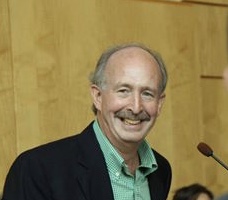
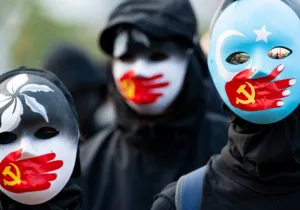
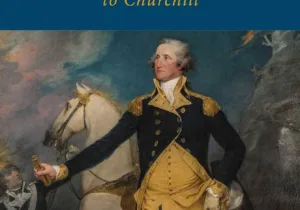
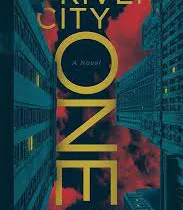
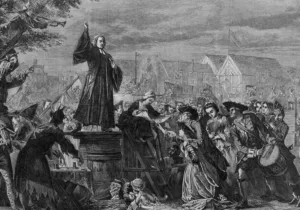


 Sponsor a student for Christianity & National Security 2024
Sponsor a student for Christianity & National Security 2024